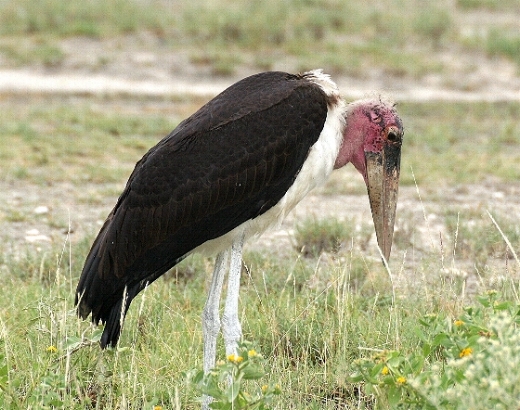| Line 1: | Line 1: | ||
| + | {{incomplete}} | ||
;[[:Category:Leptoptilos|Leptoptilos]] crumeniferus | ;[[:Category:Leptoptilos|Leptoptilos]] crumeniferus | ||
[[Image:Marabou_Stork.jpg|thumb|550px|right|Photo by Max Holdt <br/>Photographed: Etosha NP, Namibia. ]] | [[Image:Marabou_Stork.jpg|thumb|550px|right|Photo by Max Holdt <br/>Photographed: Etosha NP, Namibia. ]] | ||
| Line 14: | Line 15: | ||
==External Links== | ==External Links== | ||
{{GSearch|Leptoptilos+crumeniferus}} | {{GSearch|Leptoptilos+crumeniferus}} | ||
| − | [[Category:Birds | + | [[Category:Birds]] [[Category:Leptoptilos]] |
Revision as of 02:44, 17 May 2009
| This article is incomplete. This article is missing one or more sections. You can help the BirdForum Opus by expanding it. |
- Leptoptilos crumeniferus
Identification
150 cm. Bare head and neck, black back, and white underparts. Huge bill, a pink sack at its throat, a neck ruff, and black legs and wings. The sexes are alike, but the young bird is browner and has a smaller bill. Full maturity is not reached for up to four years.
Distribution
Taxonomy
Habitat
Wet and arid habitats.
Behaviour
It builds a tree nest in which 2-3 eggs are laid.
Diet
Diet includes different kinds of animals, either alive or as carrion, including small mammals, reptiles, and similar prey. Living prey includes termites, fish, locusts, grasshoppers, caterpillars, frogs, rodents, crocodile eggs and hatchlings, quelea nestlings, doves, young and adult flamingos, cormorant nestlings, and pelican chicks.




